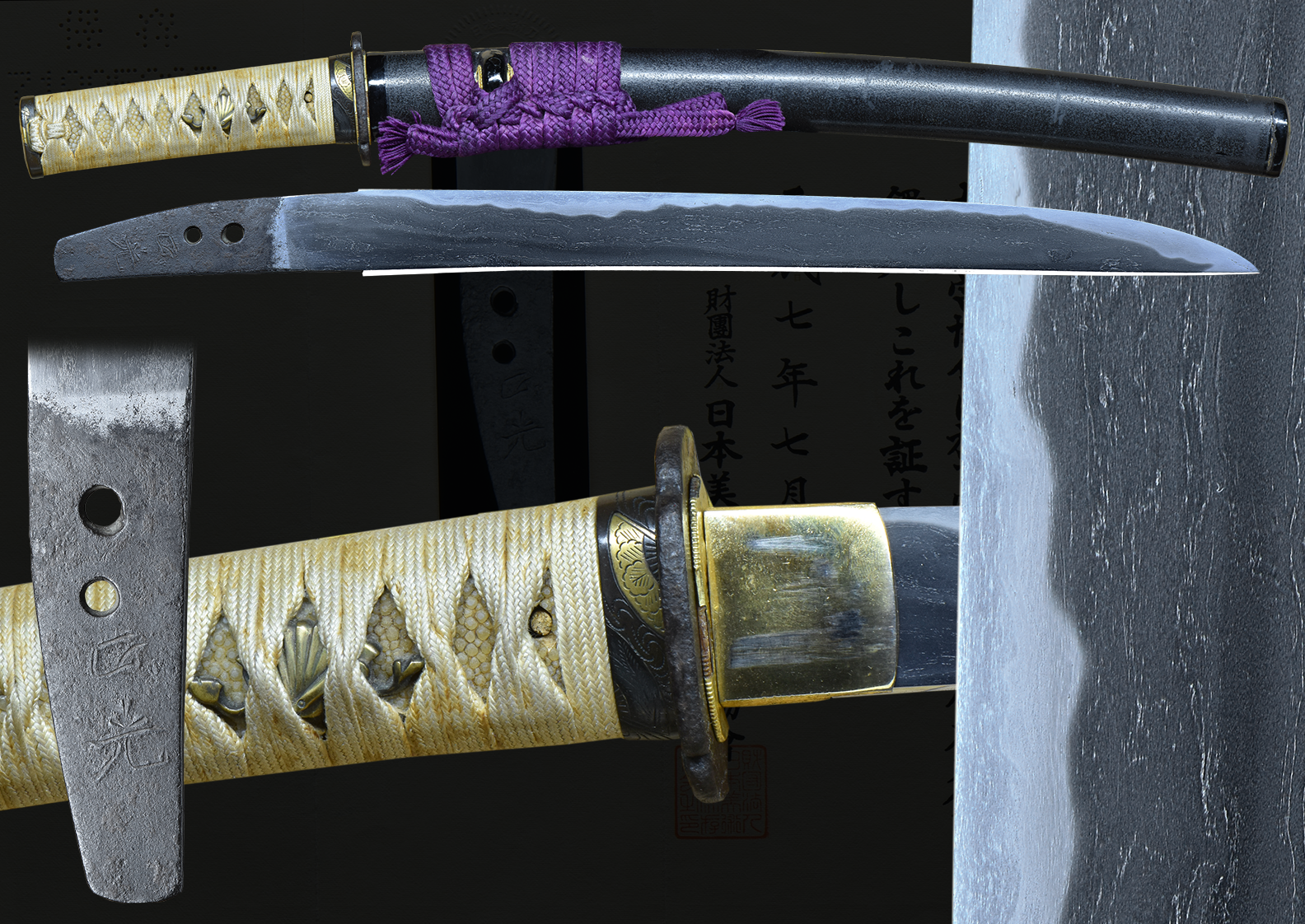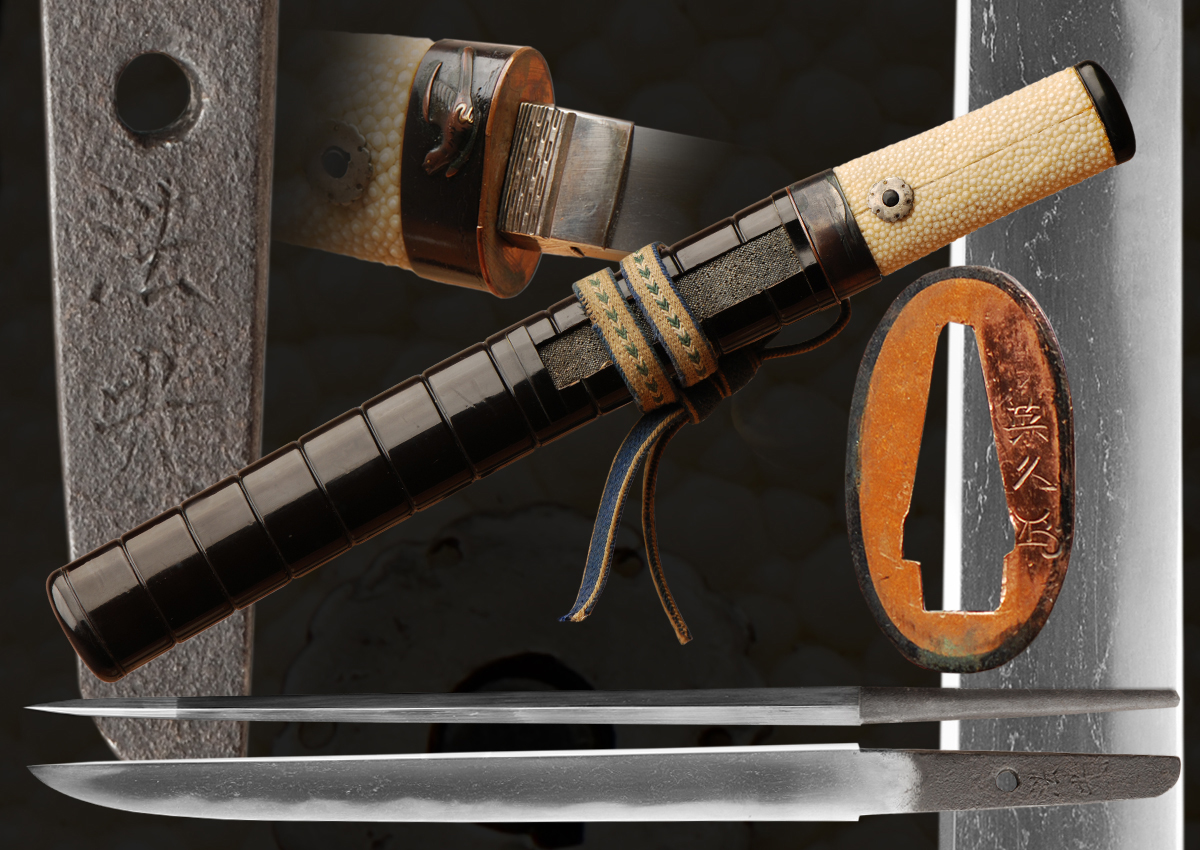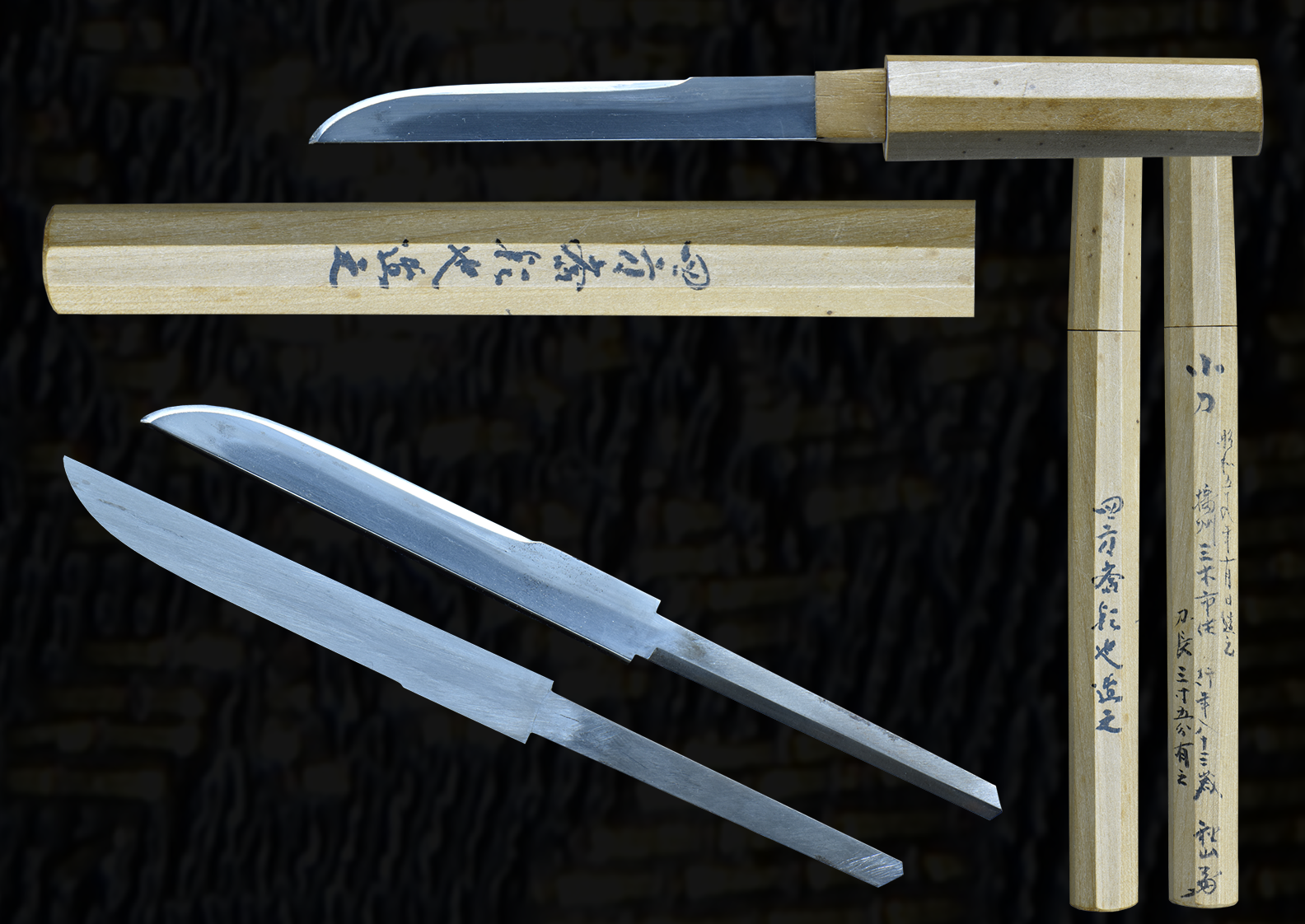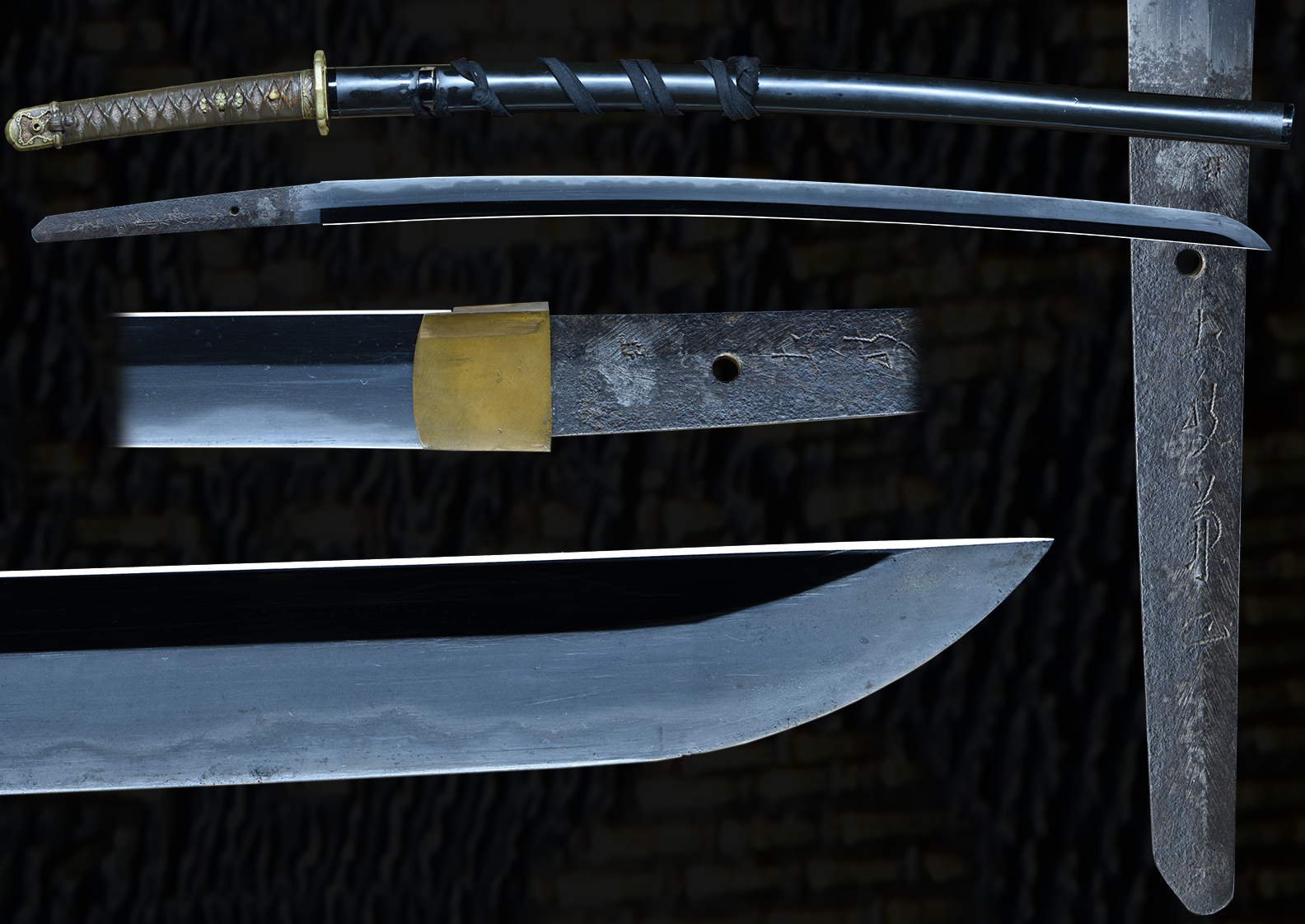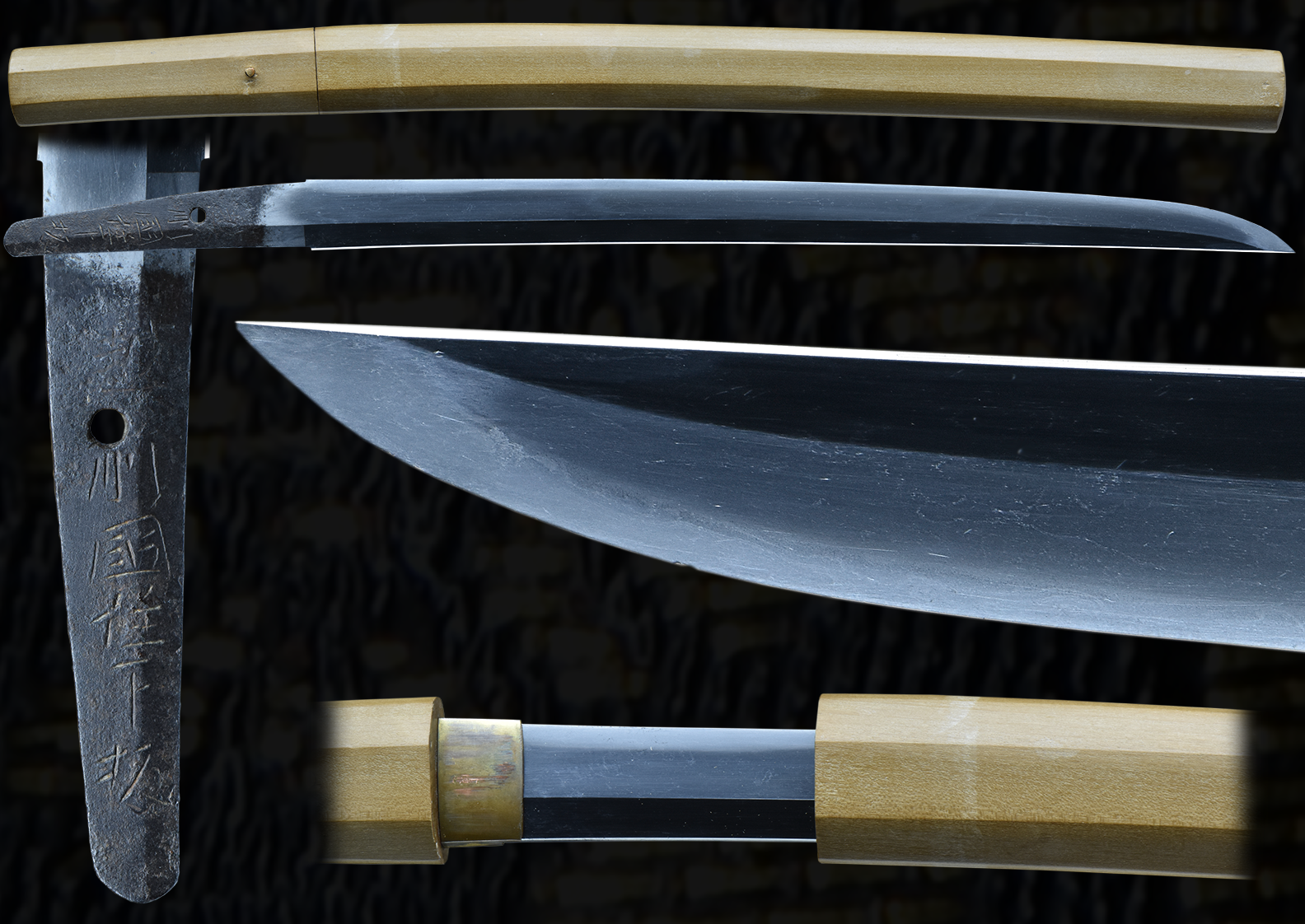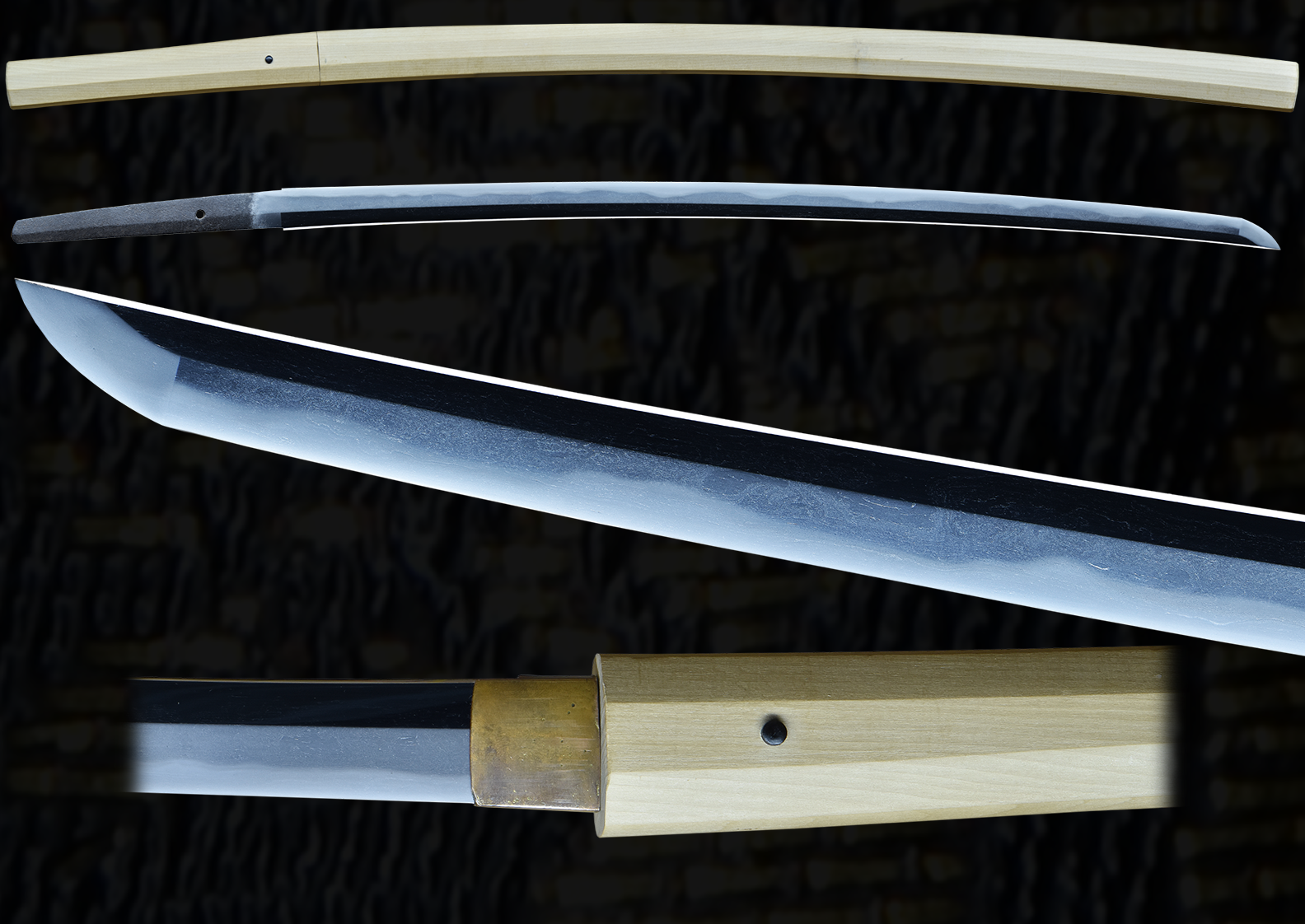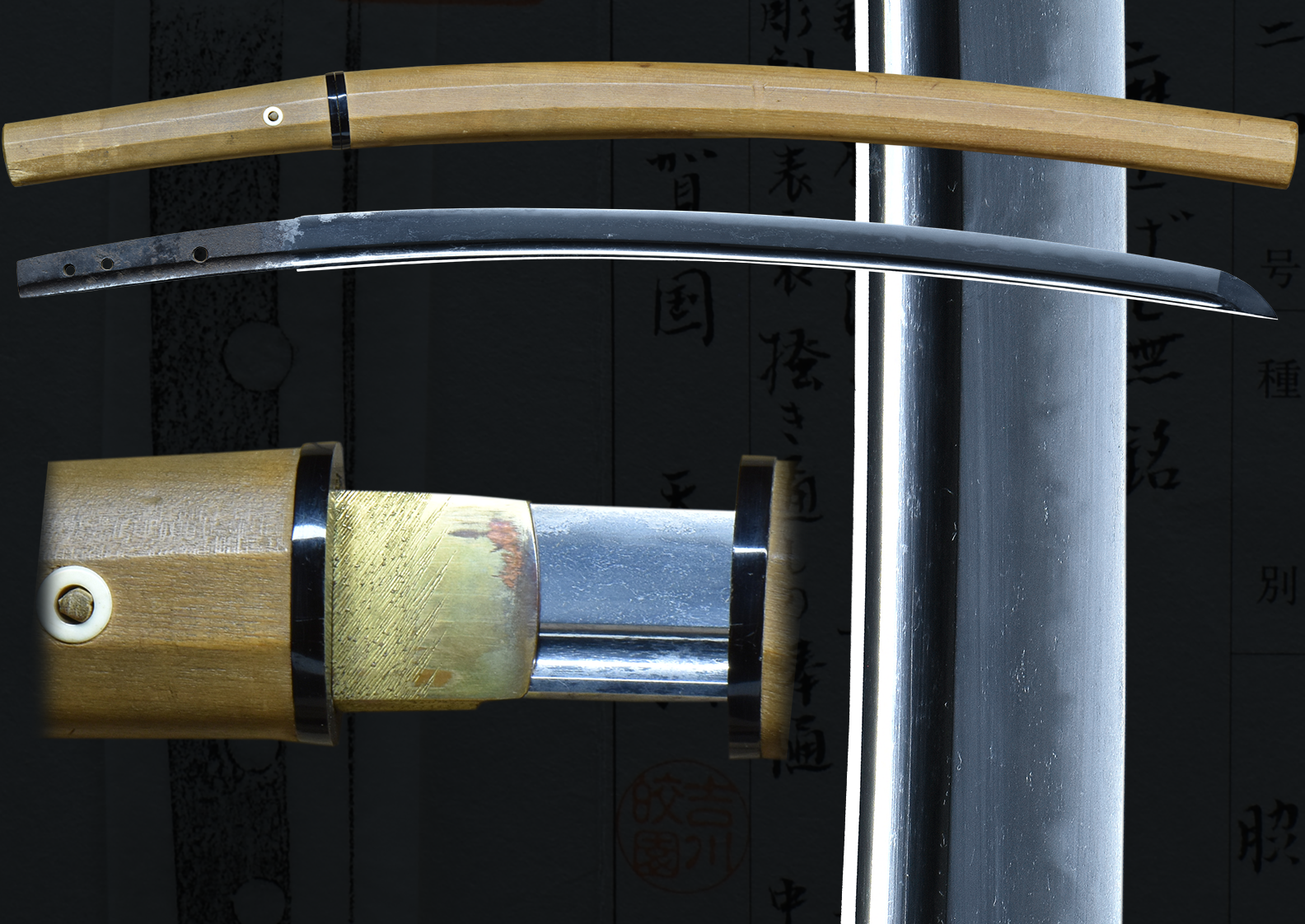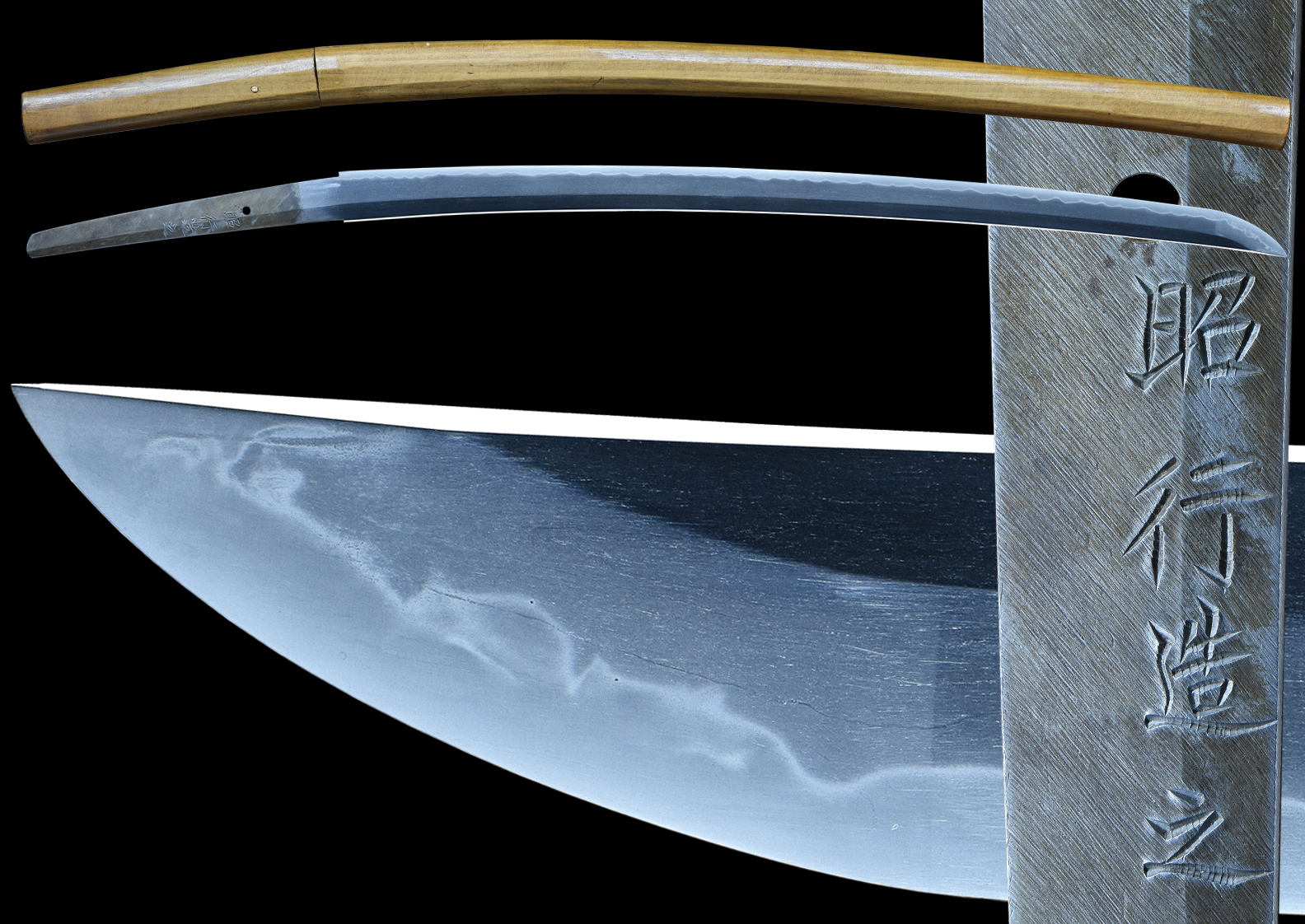AKIYUKI (昭行), Shōwa (昭和, 1926-1989), Gunma – “Akiyuki” (昭行), real name Kurihara
Washio (栗原鷲雄), he worked as a rikugun-jumei-tōshō
This gendai-to sword is a wonderful katana. The hada is A TIGHT IOTAME/MOKUME MIX. The hamon is based in sugu-ha made up of a gunome midare with a tight nioi-gucchi. The boshi is also ko-maru of gunome midare. This sword is wide healthy blade a bit on the larger side. A beautiful sword for mounting and training.
The term “gendai or gendaito” is used by collectors to refer to traditionally made blades; those which have folded steel and are water tempered. The Japanese require that for a sword to be “gendaito” it must be made of tamehagane or oroshigane even though it is impossible to tell what a sword is made from after the sword is finished and polished. Swords made of forge folded commercial mill steel look the same as those made of tamehagane after they are polished although some collectors feel that swords made of tamehagane are more likely to have active hamon and more prominent hada than those made of folded mill steel.
Gendaito Swords Explained
The term “gendaito” also refers to Japanese swords produced during 1876 to 1945. Japanese bladesmiths have produced swords for centuries, with some of the region’s first swords dating back to around 300 to 500 A.D. There were still swords in Japan before this era, though they were believed to have come from China. It wasn’t until 300 to 500 A.D. when Japan began making its own swords. Modern swords produced in Japan from 1876 to 1945 are known as gendaito.
Why were swords produced from 1876 to 1945 classified as gendaito exactly? Well, 1876 was an important year for Japan. During this time, the Japanese government passed the Halaitorei Edict. Also known as the Sword Abolishment Edict, it sought to ban the act of carrying swords in public among the general population. There were a few exceptions to the Halaitorei Edict. Former daimyo, military servicemembers and law enforcement officials, for example, could still carry swords in public. The general population, however, could not. This resulted in lower-quality swords being produced, so these swords were classified as gendaito to distinguish them from those produced during other periods.
- Mei: AKIYUKI Saku/made
- Date: Shōwa (昭和, 1926-1989)
- Nagasa: 26-1/4 inches
- Sori: 15.5 mm
- Width at the ha-machi: 35.4 mm
- Width at the yokote: 26.3 mm
- Thickness at the mune-machi: 8.0 mm
- Construction: Shinogi zukuri
- Mune: Iori
- Nakago: Ubu
- Kitae: Itame
- Hamon: Midare Gunome
- Boshi: gunome ko-Maru
- Condition: Good older polish
(shipping and insurance included)
Email us if your interested in this item and remember to include the order number for this item: fss-867.
For Sale
